The Cost of Living Crisis in Scotland: analytical report
This report draws together analysis from a wide range of sources to provide an overview of emerging evidence on the cost of living crisis. It has been produced by a cross-government group of analysts.
Chapter 4: Impact on Business
Introduction
The cost crisis is facing every business in Scotland. Business costs have significantly risen over the past year due to rising prices for energy and materials alongside rising labour costs. This has presented significant challenges as businesses continue to recover from the pandemic and attempt to ensure the resilience of cash-flow in the face of challenging demand conditions.
Businesses respond to the increased costs in a number of ways - by adjusting their prices, absorbing costs through reduced profits, or seeking to reduce other costs, including wages. Where feasible, they may seek to reduce activity levels, particularly if moving into periods of lower seasonal demand.
Higher energy prices may also make business viability more challenging. Businesses that use energy more intensively, with a large share of spending on energy, may find themselves under more pressure to pass on higher energy costs or may be more vulnerable to closure.
The impact of higher costs will also be felt by businesses through the secondary impacts on lower household incomes. This takes the form of reduced demand, particularly in consumer facing sectors of the economy, that depend on 'discretionary' spend. In September, retail sales volumes in GB fell 1.4%, continuing a downward trend over the past year and in recent months, affected by rising prices and cost of living.[65] As shown in Chapter 1 we are also already seeing the risks to demand with consumer sentiment currently at its lowest level since November 2020.
Employees may also respond to the cost crisis in the form of higher wage claims on their employers (see Chapter 6 for information on private sector wage growth).
Input prices
As Figure 8 illustrates, producer input price inflation rose to a record high annual rate in June (24.1%) before easing back slightly over the third quarter to 20% in September.
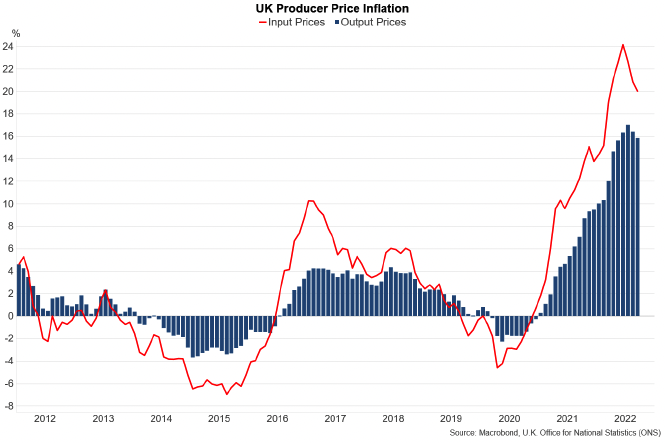
The rise in input prices have been broad based across product groups, however, as can be seen in Figure 9, crude oil and fuel have had the largest increases reflecting the rise in energy prices driving cost pressures.
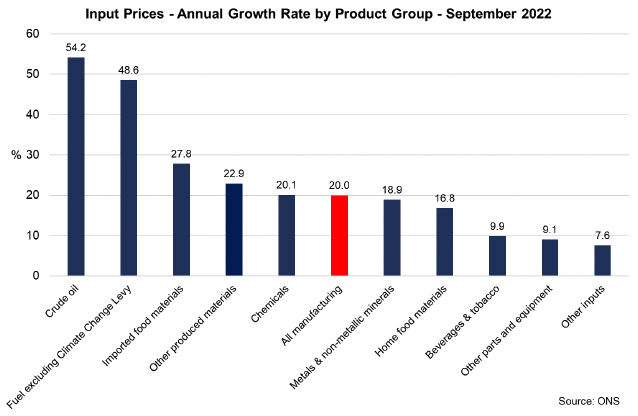
Source: ONS Producer prices
Main concerns for businesses in Scotland
Increasing costs of production (energy, raw materials and labour) are the most significant immediate challenge facing businesses in Scotland. The latest Business Insights and Condition Surveys show that 67% of all businesses reported that energy prices or inflation of goods and services prices were the main concerns in October. Concerns are highest Accommodation and Food (82%), Manufacturing (76%), Arts, Entertainment & Recreation (71%), and Construction (68%). (See Figure 10).
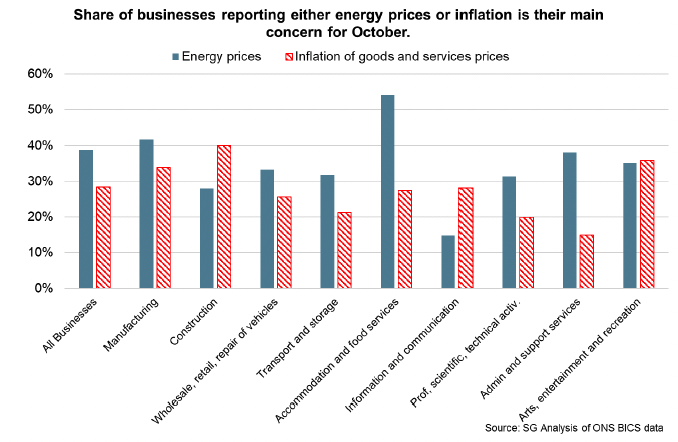
For small businesses, the FSB Small Business Index shows that fuel (72.9%) and utilities (67.1%) have been the main factor for higher business costs followed by inputs and labour.[66] At the UK level, the Office for National Statistics energy spending statistics found that the smallest "micro" businesses with zero to nine employees were much more likely than larger businesses to have a very high energy intensity of more than 20% of total purchases being spent on energy in 2019.[67]
The Energy Bill Relief Scheme announced in September 2022 will provide support for non-domestic consumers across the UK in the form of a Government supported wholesale price, as outlined in Chapter 3. The extent of benefits to businesses will depend on the specifics of the contract an individual business has. There are many contract types and data is not readily available on number of businesses by contract type.[68]
Cornwall-Insights estimate that, notwithstanding the challenge of calculating a homogenous discount across so many contract types, this represents a 45% discount to closing wholesale energy prices as at the end of last week. The support effectively reverts the market back to where it was price wise in the Spring of 2022. However, many large- and even medium-sized businesses buy energy in advance and operate hedging strategies. Therefore these businesses will have secured energy prices below what has been quoted and so will not benefit from the scheme.
Business surveys suggest that 9.8% of gas and 12.3% of electricity contracts are expiring by the end of 2022 (see Figure 11). The high share of businesses reporting 'not sure' about their contract type, underlines the importance of energy advice measures. The percentage of businesses 'not applicable' is likely to reflect responses by micro businesses that may rent space within a large building and may not hold the energy contract.
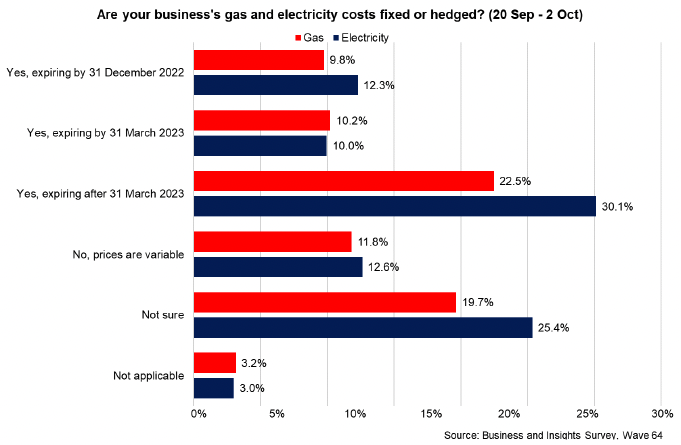
There some sectoral differences in whether gas and electricity costs are fixed, with manufacturing, arts and entertainment, accommodation and food and wholesale and retail amongst the most likely to have fixed rather than hedged contracts for gas and electricity.
Impact on business demand
Inflationary pressures and the cost of living crisis are feeding through to weakening demand and business activity. Latest business surveys show that business activity and new business/orders continued to decrease across the Scottish private sector during September (Figure 12).
New business received at Scottish private sector companies contracted for the third month running during September, with inflationary pressures and the cost of living linked to the recent weakening At the sectoral level, new orders in manufacturing firms contracted for a fifth consecutive month, though at the softest rate of decline in three months, while services providers reported their first contraction since March 2021. [69]
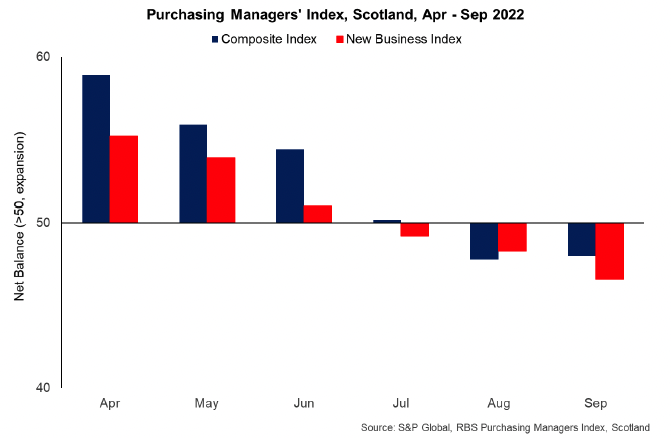
Conclusion
Business costs have significantly risen over the past year due to rising prices for energy and materials alongside rising labour costs. Input prices are around 20% higher than last year. Increasing costs of production (energy, raw materials and labour) are the most significant immediate challenge facing businesses in Scotland and threaten viability. The extent to which businesses benefit from the energy price guarantee depends on their individual contract type.
As well as the direct impacts from higher energy prices, businesses, particularly those in consumer facing sectors, will be affected by lower demand as a result of falling real household incomes. The squeeze on customer disposable incomes amid a high inflation environment has led to a recent downturn in business activity and new business.
Contact
Email: socialresearch@gov.scot
There is a problem
Thanks for your feedback